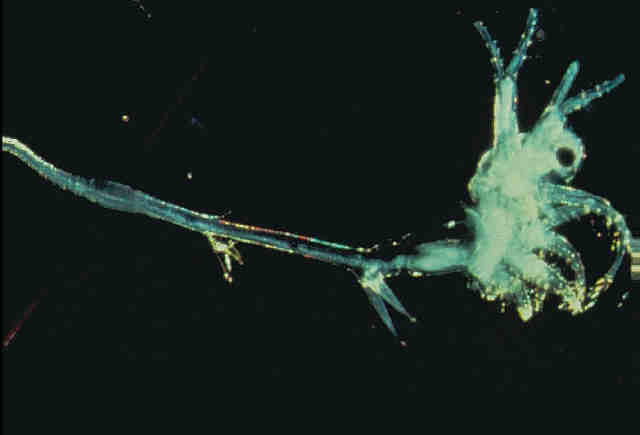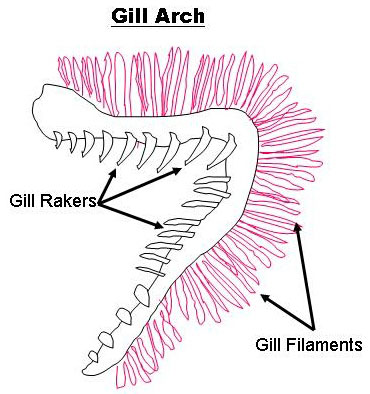
Nutrition
 Paddlefish do not have a very diverse diet.
They mostly feed on plankton, specifically the water flea (Daphnia
sp.) (Wilkens, 2001).
Paddlefish filter feed on zooplankton in order to get their
nutrition (Hales, 1981). Some
studies are starting to suggest, however, that paddlefish are able
to go between filter feeding and selective feeding (Hales,
1981). Paddlefish have a rostral electrosensory system
that some studies suggest help them detect their plankton prey (Wilkens,
2001). By use of this electrosensory system, the
paddlefish can look specifically for certain foods, such as tiny crustaceans, rather than just
filter feed on the many zooplankton that are floating in nearby
waters (Hales, 1981).
Paddlefish do not have a very diverse diet.
They mostly feed on plankton, specifically the water flea (Daphnia
sp.) (Wilkens, 2001).
Paddlefish filter feed on zooplankton in order to get their
nutrition (Hales, 1981). Some
studies are starting to suggest, however, that paddlefish are able
to go between filter feeding and selective feeding (Hales,
1981). Paddlefish have a rostral electrosensory system
that some studies suggest help them detect their plankton prey (Wilkens,
2001). By use of this electrosensory system, the
paddlefish can look specifically for certain foods, such as tiny crustaceans, rather than just
filter feed on the many zooplankton that are floating in nearby
waters (Hales, 1981).
Once the paddlefish is able to use their
electrosensory system to seek out the small crustaceans, they strain them out with
gill rakers (Paddlefish, 2011).
Gill rakers are bony projections that are like combs to help direct
solid material, such as the crustaceans, that are floating in the
water down the esophagus, preventing it from slipping out through
the gill slits (Gills, 2013).
Gill slits are present in most fish, with the exception being those
that feed on organisms that are larger, such as other fish (Gills,
2013).
system to seek out the small crustaceans, they strain them out with
gill rakers (Paddlefish, 2011).
Gill rakers are bony projections that are like combs to help direct
solid material, such as the crustaceans, that are floating in the
water down the esophagus, preventing it from slipping out through
the gill slits (Gills, 2013).
Gill slits are present in most fish, with the exception being those
that feed on organisms that are larger, such as other fish (Gills,
2013).